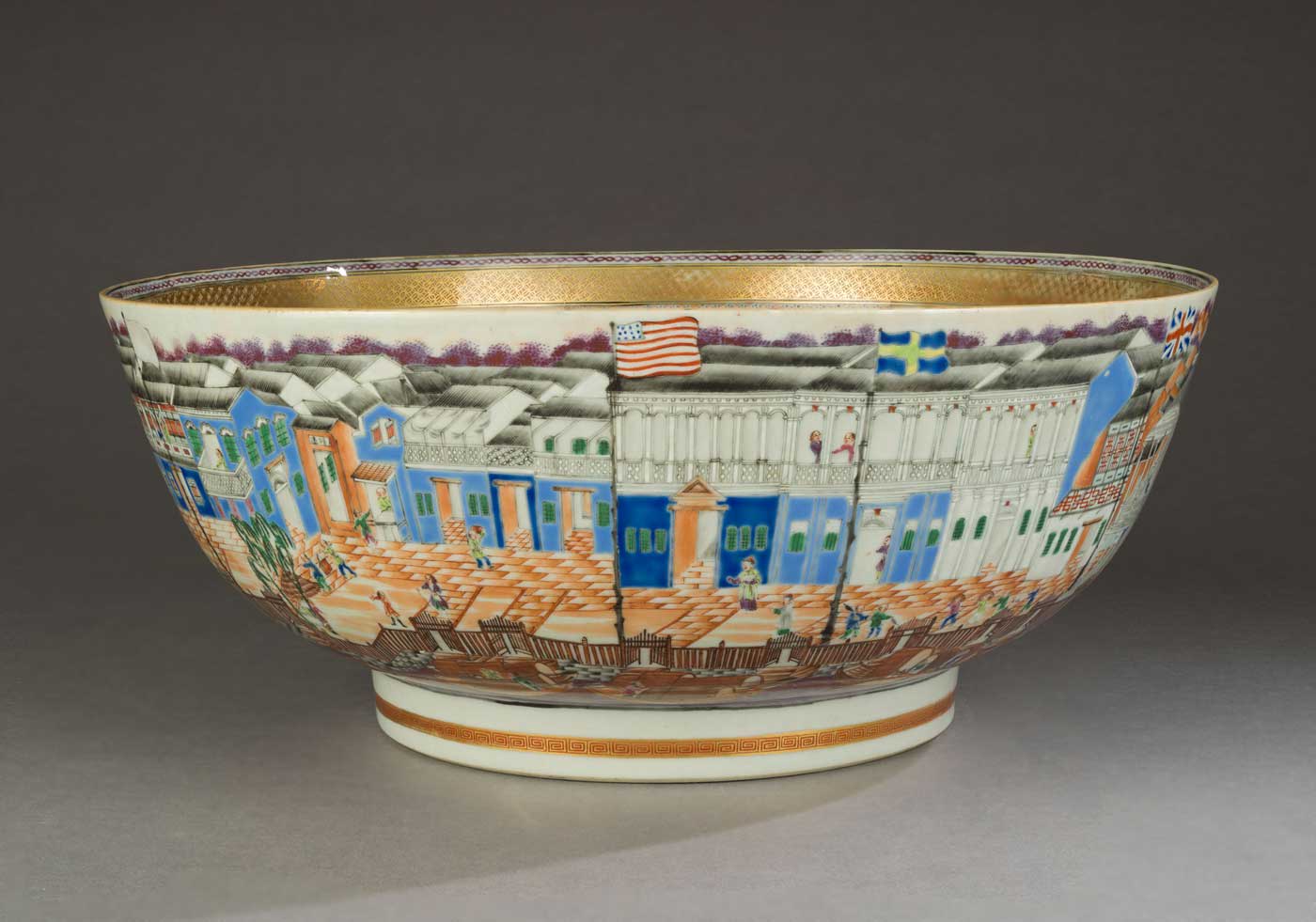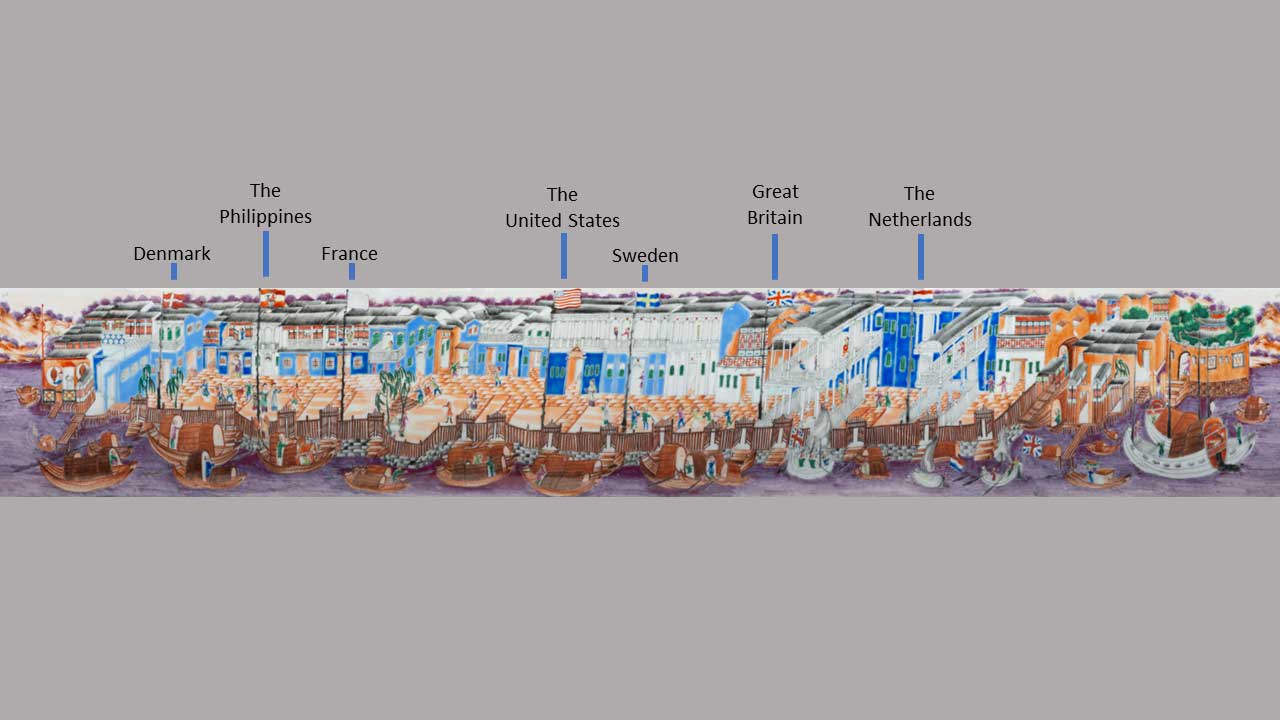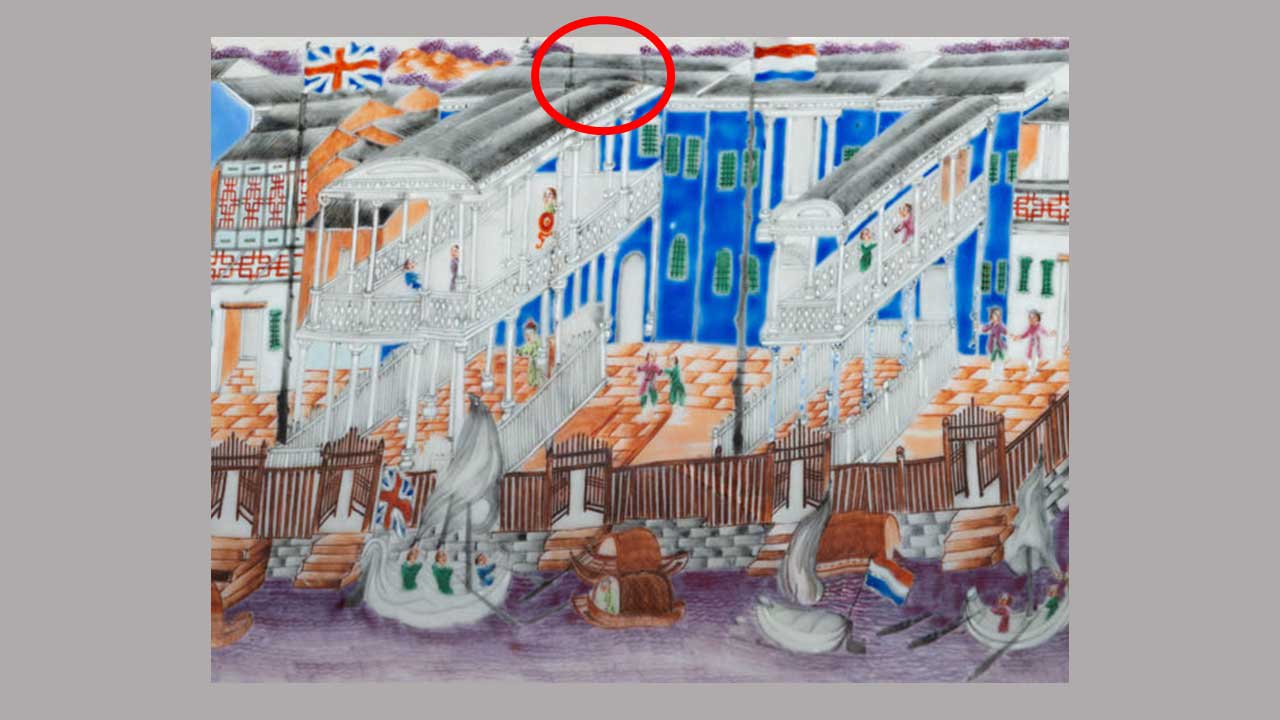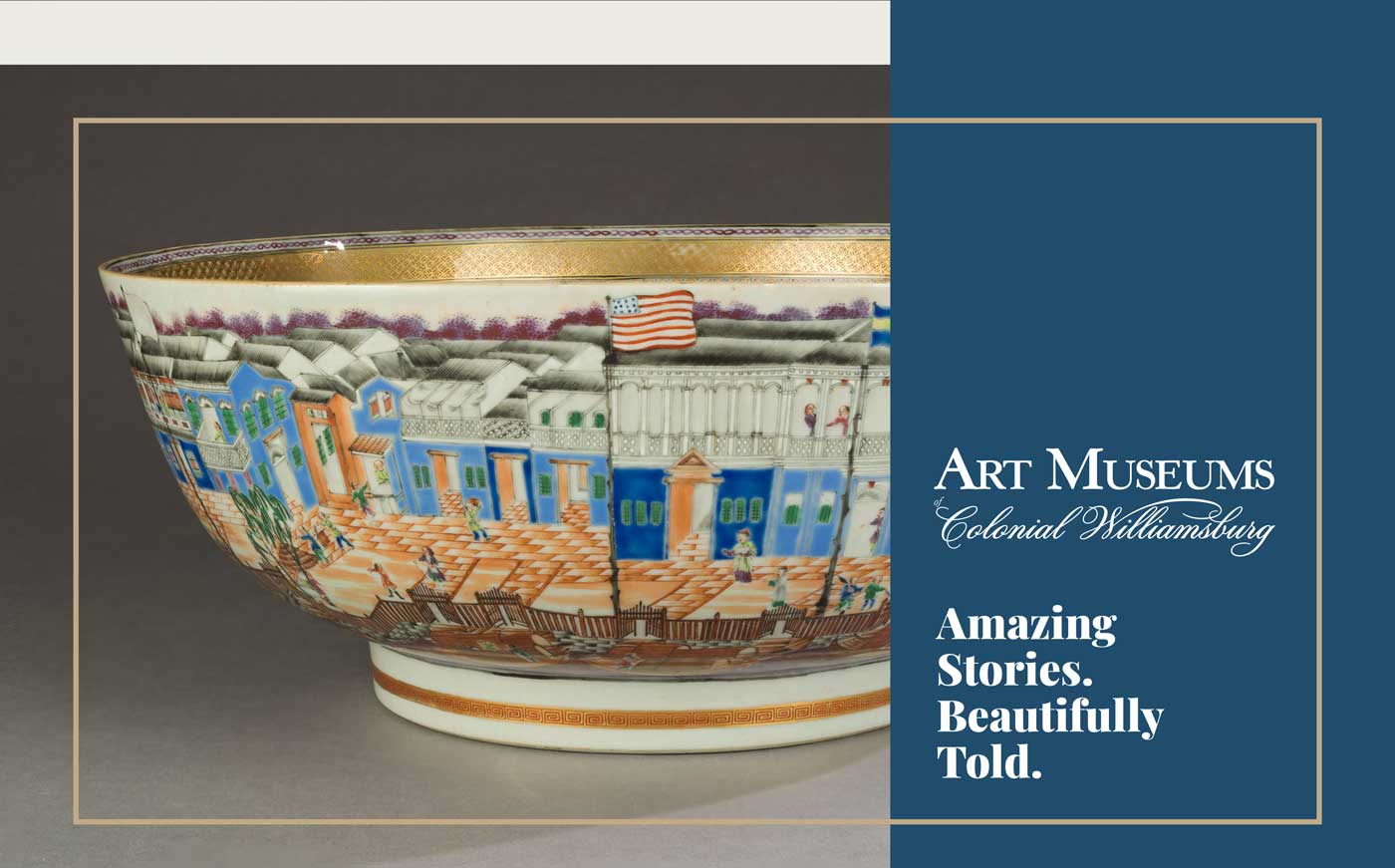Today we’re featuring a new addition to the collection, a very special punch bowl that will be on view May 1, 2023, in the Wilson Family Gallery at the DeWitt Wallace Decorative Arts Museum, one of the Art Museums of Colonial Williamsburg and home to one of the nation’s premier collections of fine and decorative arts.

What is it?
Made in Jingdezhen, China, and decorated in Guangzhou (Canton), around 1787-1788, this monumental punch bowl—referred to as a Hong bowl—is made of hard-paste porcelain composed of kaolin and petunse. The hand-painted decoration illustrates a continuous scene of two-story Western-style arcaded trading houses or offices referred to as "Hongs" and located along the Guangzhou waterfront at the mouth of China’s Pearl River. The double-arcaded structures housed offices on the first floor, while the second floor provided living quarters for ship cargoes and captains, officials, and other travelers doing business and trade with China. Westerners were not permitted to enter mainland China, so the Hongs also included long covered porticos and fenced areas where Westerners could stroll for exercise while docked.
What’s the story?
Hong bowls were basically grand souvenirs. Ship captains and supercargoes ordered punch bowls to commemorate their voyages, the vibrant exterior decoration depicting the Hongs, each flying the flag of its respective country. Whether at sea or on land, the punch bowl proclaimed to imbibers and all who saw it the story of the owner’s world travels and important role in the China trade.

This Hong bowl is painted with foreign offices shown flying the flags of Denmark, the Philippines, France, the United States, Sweden, Great Britain, and The Netherlands. Each country rented space from the Chinese government. The flags are not randomly painted but specifically reflect the locations of the various Hongs at the time the bowl was painted.
Additionally, a second American flag may be seen painted out between the British and Dutch flags. It represents the earlier location of the United States' Hong before the office was relocated. That ghost of the flag and the other, visible American flag help us date the bowl to the time of the US Hong’s relocation, 1787-1788.

Why it matters
Only a handful of these monumental Hong bowls with American flags survive and this is one of three currently known with this specific configuration of flags, including the silhouette of the flag revealing the US Hong’s earlier location. The bowl allows us to share so many stories about commemorative objects and travel mementos to international trade in the early years of post-Revolutionary America.
See for yourself
You can find the Hong Bowl here and tens of thousands of other objects in the online collection here. We also invite you to see this remarkable object in person at the Art Museums of Colonial Williamsburg and discover more amazing stories, beautifully told.
Angelika Kuettner has worked at Colonial Williamsburg for 15 years. She enjoys studying ceramics and glass of all types and their interplay with other 18th and 19th century every-day objects found on the dining or tea table, in the chamber, or even in the garden.
Colonial Williamsburg is the largest living history museum in the world. Witness history brought to life on the charming streets of the colonial capital and explore our newly expanded and updated Art Museums of Colonial Williamsburg, featuring the nation’s premier folk art collection, plus the best in British and American fine and decorative arts from 1670–1840. Check out sales and special offers and our Official Colonial Williamsburg Hotels to plan your visit.
